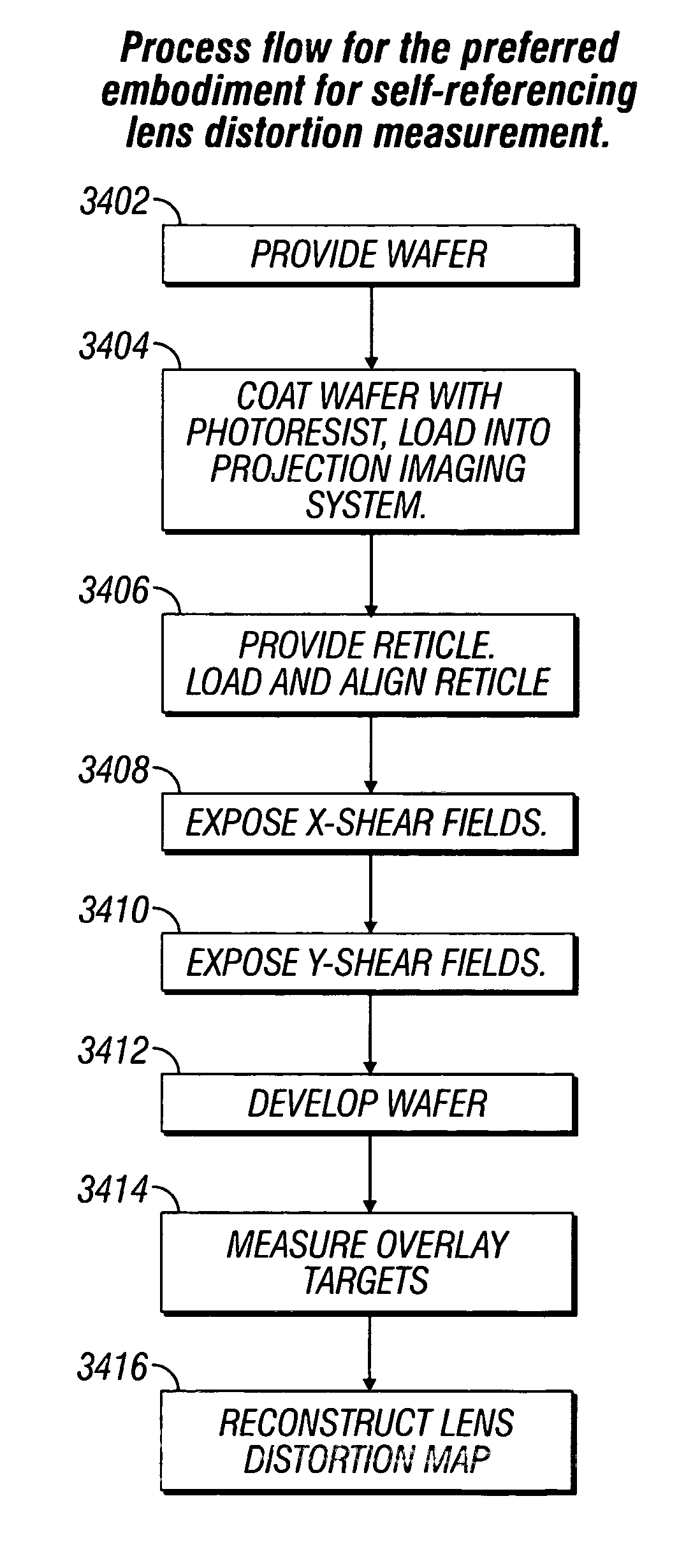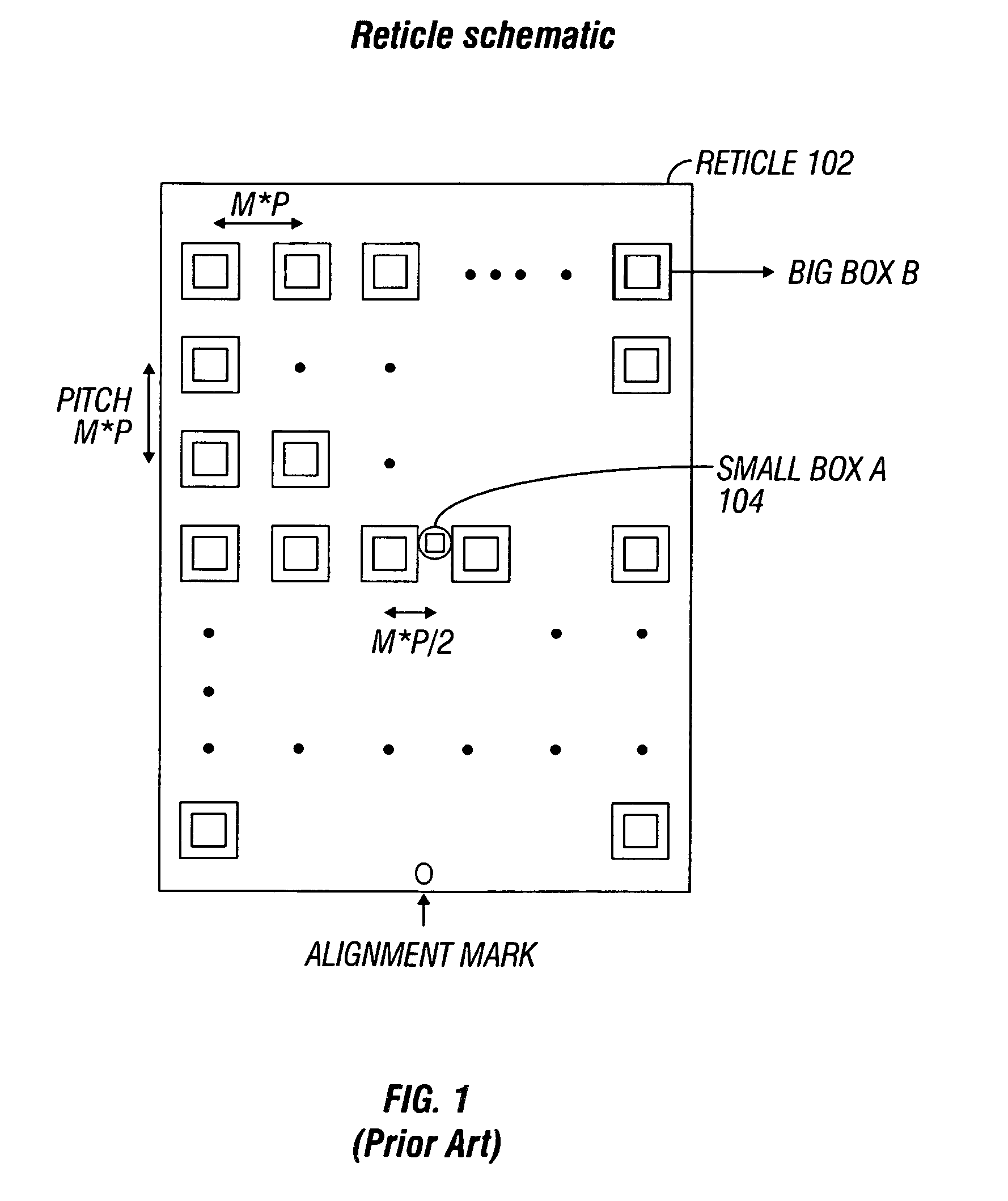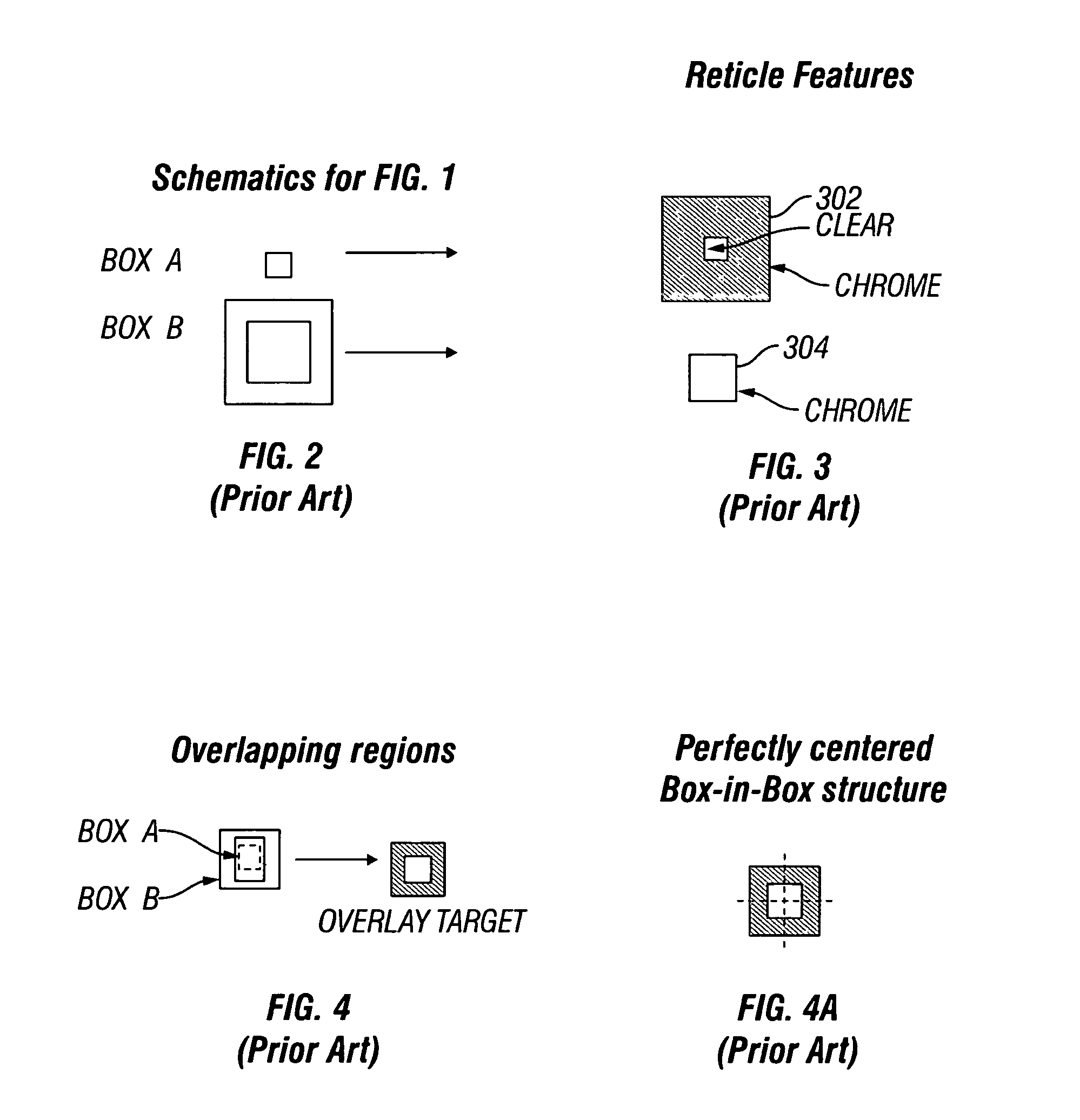Method and apparatus for self-referenced projection lens distortion mapping
a projection lens and mapping technology, applied in the field of optical metrology, can solve the problems of machine to machine wafer stage differences, the feature size of the device is dwindling, and the performance of the photolithographic system is pushed to the limit,
- Summary
- Abstract
- Description
- Claims
- Application Information
AI Technical Summary
Benefits of technology
Problems solved by technology
Method used
Image
Examples
embodiment
Preferred Embodiment
[0094]A simple and accurate methodology that allows for the extraction of lens distortion placement error excluding total translation, rotation, orthogonality and x and y scale error and is mathematically decoupled from stage error is described. FIG. 34 illustrates the methodology in terms of a process flow diagram. First, in block 3402, a wafer is provided; wafer alignment marks are not required, a bare wafer can be used. Next, in block 3404, the wafer is coated with resist and loaded onto the projection imaging system or machine. Then in block 3406, a reticle pattcrn such as illustrated in FIG. 20, including a two dimensional array of box structures or targets of various sizes, see FIG. 20A, is loaded into the machine's reticle management system and aligned to the reticle table. The reticle pattern can be, for example, an Nx×Ny array of overlay groups as shown in FIG. 20A with a portion of the whole Nx×Ny array being schematically shown in FIG. 20.
[0095]Then in...
second main embodiment
[0134]Yet another embodiment allows for the extraction of lens distortion placement error excluding total translation, rotation, and overall scale or magnification overlay error and is mathematically decoupled from stage error. FIG. 15 illustrates this embodiment in terms of a process flow diagram. First in block 1502, a wafer is provided. Typically it already has alignment marks suitable for use at normal orientation (0 degrees) and when rotated by 90-degrees as shown in FIG. 22. In cases where the projection imaging tool, or machine, is capable of realigning an unpatterned wafer after a 90-degree rotation to 1504, the wafer is coated with photoresist, loaded onto the machine, and possibly aligned. A reticle pattern for example the reticle shown in FIG. 20, consisting of a two dimensional array of box structures or targets of various sizes as shown in FIG. 20A is loaded into the machine's reticle management system and aligned to the reticle table in block 1506. This reticle pattern...
PUM
| Property | Measurement | Unit |
|---|---|---|
| size | aaaaa | aaaaa |
| size | aaaaa | aaaaa |
| projection imaging | aaaaa | aaaaa |
Abstract
Description
Claims
Application Information
 Login to View More
Login to View More - R&D
- Intellectual Property
- Life Sciences
- Materials
- Tech Scout
- Unparalleled Data Quality
- Higher Quality Content
- 60% Fewer Hallucinations
Browse by: Latest US Patents, China's latest patents, Technical Efficacy Thesaurus, Application Domain, Technology Topic, Popular Technical Reports.
© 2025 PatSnap. All rights reserved.Legal|Privacy policy|Modern Slavery Act Transparency Statement|Sitemap|About US| Contact US: help@patsnap.com



